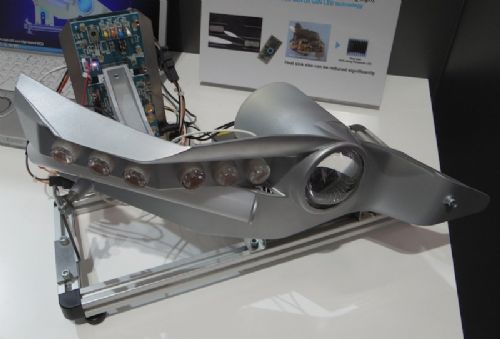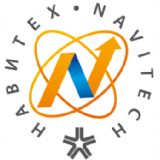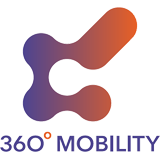|
Panasonic Exhibits GaN Substrate-based LED for Headlights
12/4/2014 |
|
|
Panasonic Corp exhibited a white LED device for automotive headlights at electronica 2014.
Panasonic's white LED devices use blue LED chips that are manufactured by using GaN (gallium nitride) substrates. They enable to easily increase current density, compared with conventional sapphire substrates.
Because of the high current density, smaller chips can be used for realizing a brightness equivalent to that of products using sapphire substrates, enabling to reduce the size of headlight.
"It helps design headlights more freely," Panasonic said.
The company also exhibited a microcomputer and DC-DC converter necessary for driving the white LED device.
"Our strength lies in the fact that we can provide not only LED devices but also digital products like microcomputers and analog products like DC-DC converters," it said.
With such features, Panasonic's automotive LED products have already begun to be employed in the European market.
New type of silicon could find use in solar cells and LEDs
You probably wouldn't be reading this if it weren't for silicon. It's the second most-abundant element in the Earth's crust as well as the key to modern technology - used in the integrated circuits that power such electronics as computers, mobile phones, and even some toasters and refrigerators. It's also used in compound form in building, ceramics, breast implants, and many other areas. And now the ubiquitous element may have a plethora of new applications, thanks to a team of Carnegie scientists who synthesized an allotrope (new/different physical form) with the chemical formula Si24.
The diamond-structured form of silicon normally used in technology applications has a semiconducting property called an indirect band gap, which differs from a direct band gap in that it requires an extra step to excite bound electrons into a free state so that they can participate in electrical conduction. Direct band gap semiconductors need only two entities to intersect; a photon imparts momentum on an electron. New type of silicon could find use in solar cells and LEDsBut indirect band gap semiconductors require a third entity - a lattice vibration called a phonon - because the minimum energy state of the conduction band and the maximum energy state of the valence band occur at different values of momentum.
This new form of silicon is a quasi-direct band gap material, which means not only that it can conduct electricity more efficiently than diamond-structured silicon but also that it can absorb and emit light - a property never before achieved. (I say quasi-direct because it is technically a very small and almost flat indirect band gap.) These properties make it ripe for use in next-generation solar cells, LEDs, and other semiconductor technologies.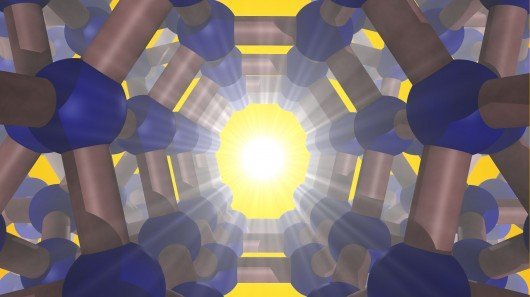
To create Si24, the researchers first formed a polycrystalline compound of silicon and sodium (Na4Si24) with help from a tantalum capsule, very high temperature, and a 1,500 ton multi-anvil press that gradually reached a pressure of 10 gigapascals (1,450,377 pounds per square inch). This compound was then "degassed" in a vacuum at 400 Kelvin (260 F) for eight days, after which they had pure Si24 in an open framework called a zeolite-type structure.
The structure is comprised of five-, six-, and eight-membered silicon rings through which small atoms and molecules could spread, with potential applications in electrical energy storage and molecular-scale filtering, among other things.
Si24 could be just the tip of the iceberg for desirable new materials formed at high pressure, the researchers suggest. Lead researcher Timothy Strobel has gone so far as to call high-pressure precursor synthesis "an entirely new frontier in novel energy materials" that goes above and beyond silicon. And the stability of the new structures at atmospheric pressure means that low-pressure methods such as chemical vapor deposition could potentially allow large-scale production.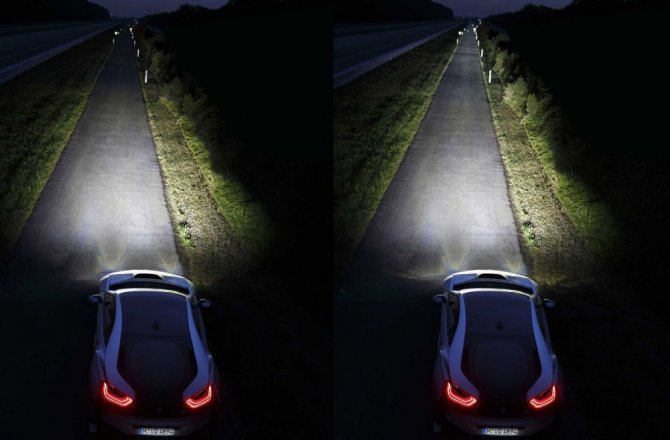
BMW Is First With Laser HeadlightsBMW Is First With Laser Headlights
BMW's cars already have a distinctive look in your rear-view mirror with their angel-eye headlights and that view will soon start to look even more distinct. That's because the automaker is now offering new laser headlights on its cars, starting with the 2015 i8 sports car, which has just entered production and due on sale later this year priced from $135,925 with shipping.
Laser lights offer a number of advantages over the best lighting technology available on cars today, LED lighting. LEDs themselves already offer several advantages in terms of light output, energy use and finer control over incandescent or gas discharge lighting and lasers take that a step further.
While we've witnessed the rebirth of the electric car, here are three other battery powered / electric forms of transportation we can look forward to.
Laser light is a different kind of light to that of regular light, as it's monochromatic -- the light being produced only has one wavelength, rather than a color spectrum. As a result the light can potentially be far more intense, reaching as far as 600 meters or double the range of LEDs, and the beam pattern can be controlled very precisely, instantly and safely.
In addition, laser lights consume around 30 percent less energy than already highly power-saving LEDs and the diodes, the actual lighting units, are ten times smaller. This helps to save not only available installation space inside the headlight, but also weight -- the size of the reflector surface can be reduced by a factor of up to ten vs. LEDs.
While other automakers have promised to deliver the technology, BMW is the first to actually offer it on one of its cars. Note, the standard i8 is equipped with full LED headlights. BMW is offering the laser light as option, and only for the high-beam at present.
In the coming years, more BMW models will be available with laser lights. |
|
Related Exhibition:
|
|
|
 |
|
Electronica 2014
|
26th International Trade Fair for Electronic Components, Systems and Applications
11/11/2014 - 11/14/2014
Venue: New Munich Trade Fair Centre, Munich, Germany
|
|
|
|
|
|
|


